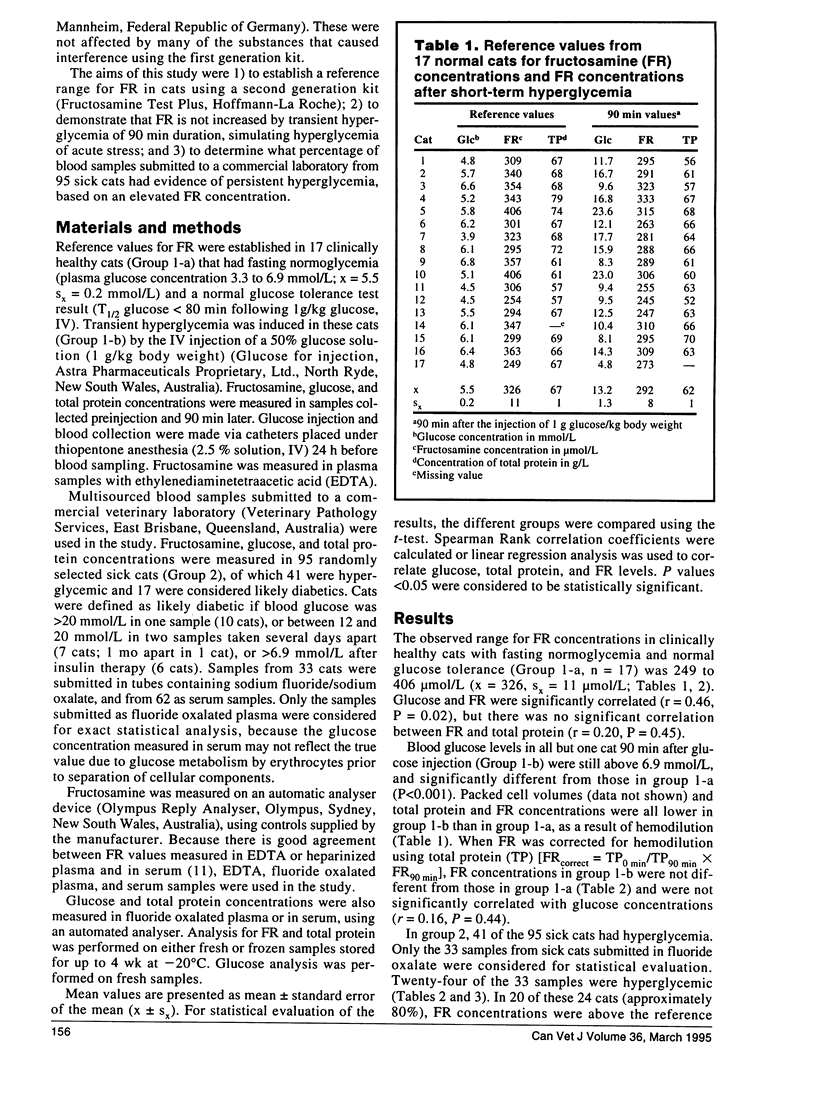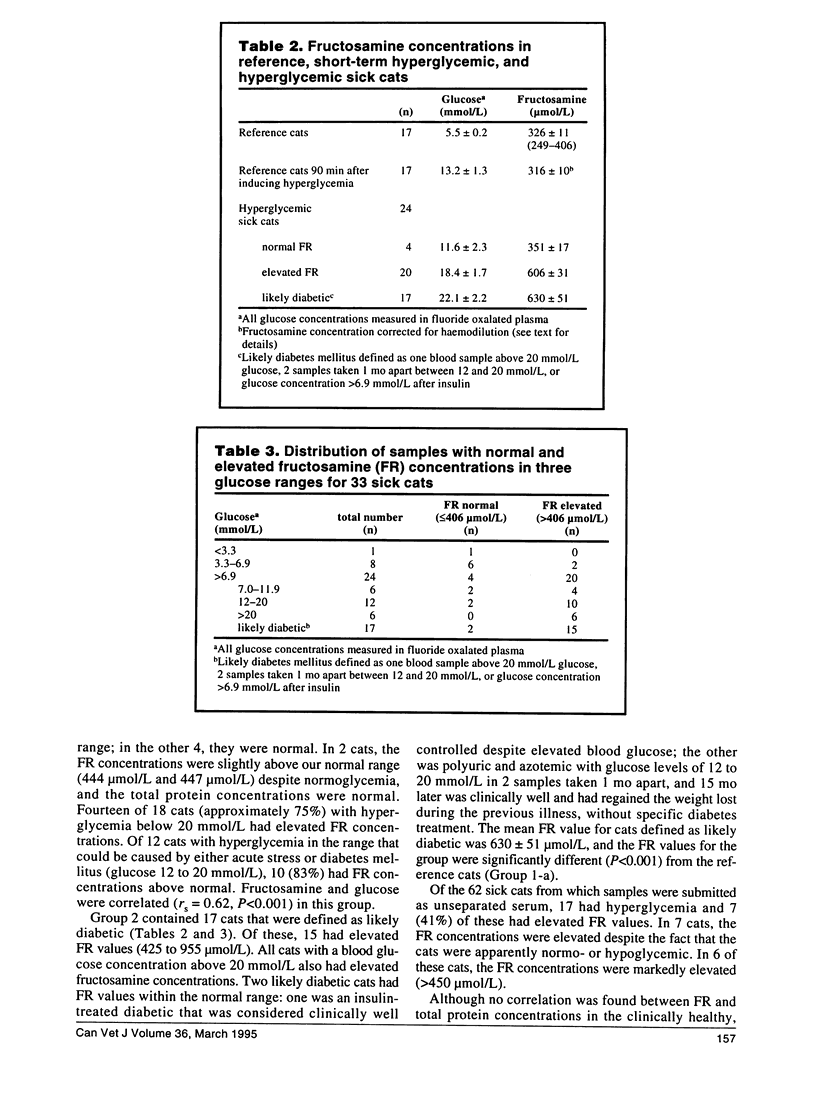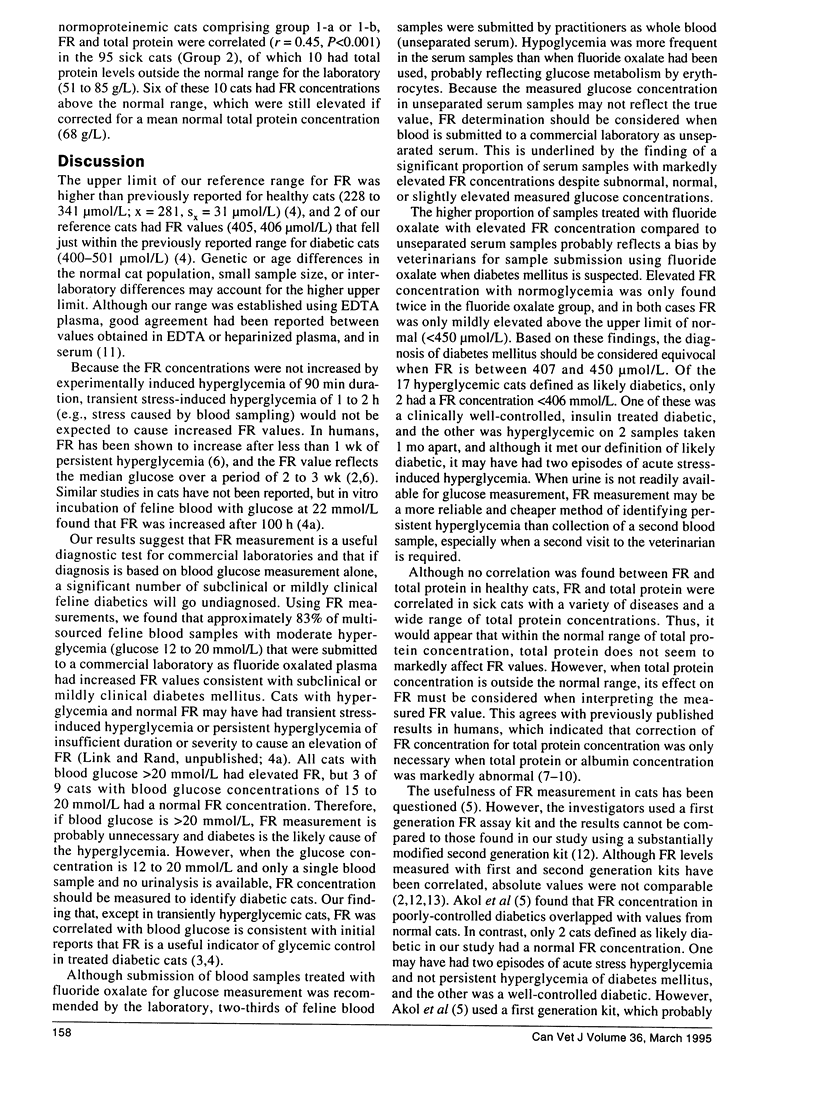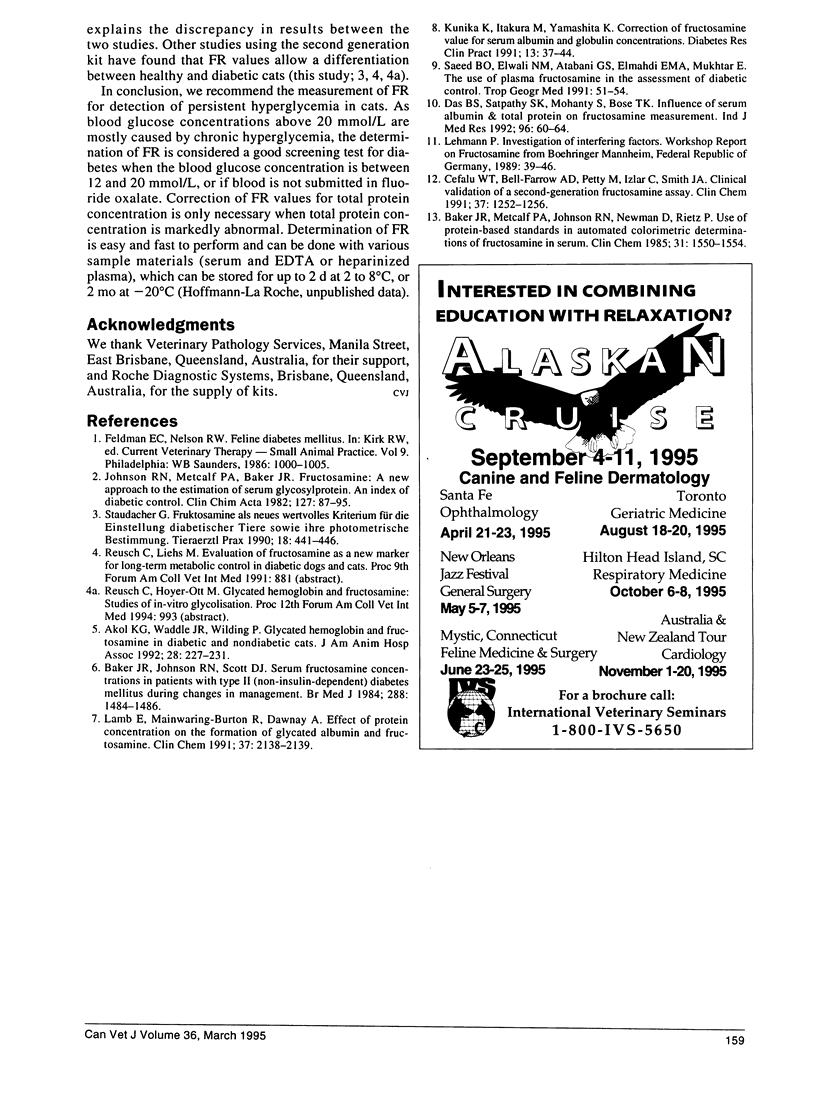Abstract
The aims of this study were 1) to establish a reference range for fructosamine in cats using a commercial fructosamine kit; 2) to demonstrate that the fructosamine concentration is not increased by transient hyperglycemia of 90 min duration, simulating hyperglycemia of acute stress; and 3) to determine what percentage of blood samples submitted to a commercial laboratory from 95 sick cats had evidence of persistent hyperglycemia based on an elevated fructosamine concentration. Reference intervals for the serum fructosamine concentration were established in healthy, normoglycemic cats using a second generation kit designed for the measurement of the fructosamine concentration in humans. Transient hyperglycemia of 90 min duration was induced by IV glucose injection in healthy cats. Multisourced blood samples that were submitted to a commercial veterinary laboratory either as fluoride oxalated plasma or serum were used to determine the percentage of hyperglycemic cats having persistent hyperglycemia. The reference interval for the serum fructosamine concentration was 249 to 406 mumol/L. Transient hyperglycemia of 90 min duration did not increase the fructosamine concentration and there was no correlation between fructosamine and blood glucose. In contrast, the fructosamine concentration was correlated with the glucose concentration in sick hyper- and normoglycemic cats. It is concluded that the fructosamine concentration is a useful marker for the detection of persistent hyperglycemia and its differentiation from transient stress hyperglycemia. Fructosamine determinations should be considered when blood glucose is 12 to 20 mmol/L and only a single blood sample is available for analysis.
Full text
PDF




Selected References
These references are in PubMed. This may not be the complete list of references from this article.
- Baker J. R., Johnson R. N., Scott D. J. Serum fructosamine concentrations in patients with type II (non-insulin-dependent) diabetes mellitus during changes in management. Br Med J (Clin Res Ed) 1984 May 19;288(6429):1484–1486. doi: 10.1136/bmj.288.6429.1484. [DOI] [PMC free article] [PubMed] [Google Scholar]
- Baker J. R., Metcalf P. A., Johnson R. N., Newman D., Rietz P. Use of protein-based standards in automated colorimetric determinations of fructosamine in serum. Clin Chem. 1985 Sep;31(9):1550–1554. [PubMed] [Google Scholar]
- Cefalu W. T., Bell-Farrow A. D., Petty M., Izlar C., Smith J. A. Clinical validation of a second-generation fructosamine assay. Clin Chem. 1991 Jul;37(7):1252–1256. [PubMed] [Google Scholar]
- Das B. S., Satpathy S. K., Mohanty S., Bose T. K. Influence of serum albumin & total protein on fructosamine measurement. Indian J Med Res. 1992 Feb;96:60–64. [PubMed] [Google Scholar]
- Johnson R. N., Metcalf P. A., Baker J. R. Fructosamine: a new approach to the estimation of serum glycosylprotein. An index of diabetic control. Clin Chim Acta. 1983 Jan 7;127(1):87–95. doi: 10.1016/0009-8981(83)90078-5. [DOI] [PubMed] [Google Scholar]
- Kunika K., Itakura M., Yamashita K. Correction of fructosamine value for serum albumin and globulin concentrations. Diabetes Res Clin Pract. 1991 Aug;13(1-2):37–44. doi: 10.1016/0168-8227(91)90031-8. [DOI] [PubMed] [Google Scholar]
- Lamb E., Mainwaring-Burton R., Dawnay A. Effect of protein concentration on the formation of glycated albumin and fructosamine. Clin Chem. 1991 Dec;37(12):2138–2139. [PubMed] [Google Scholar]
- Saeed B. O., elWali N. M., Atabani G. S., Elmahdi E. M., Mukhtar E. The use of plasma fructosamine in the assessment of diabetic control. Trop Geogr Med. 1991 Jan-Apr;43(1-2):51–54. [PubMed] [Google Scholar]
- Staudacher G. Fruktosamine als neues wertvolles Kriterium für die Einstellung diabetischer Tiere sowie ihre photometrische Bestimmung. Tierarztl Prax. 1990 Oct;18(5):441–446. [PubMed] [Google Scholar]


